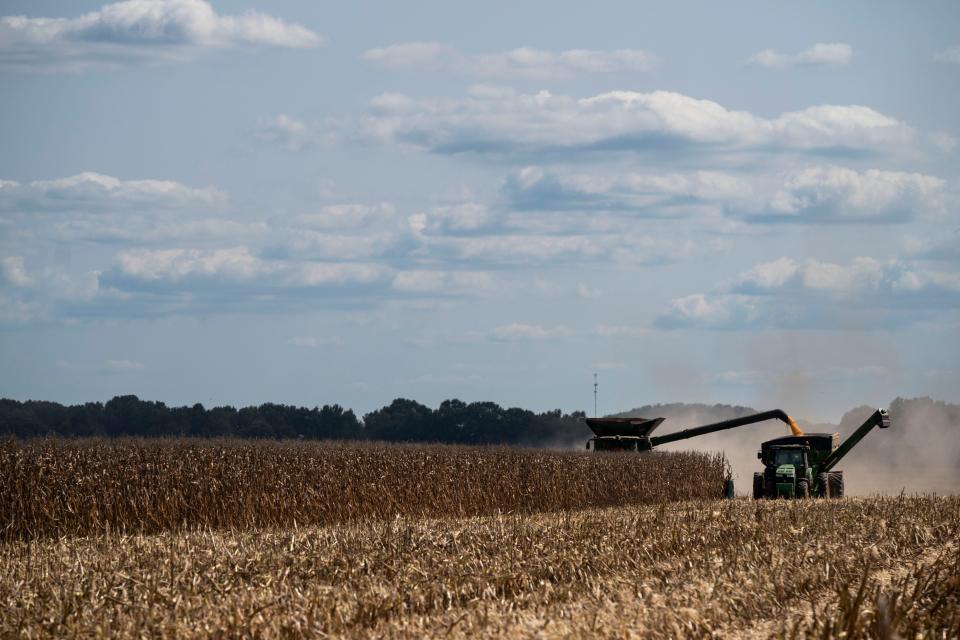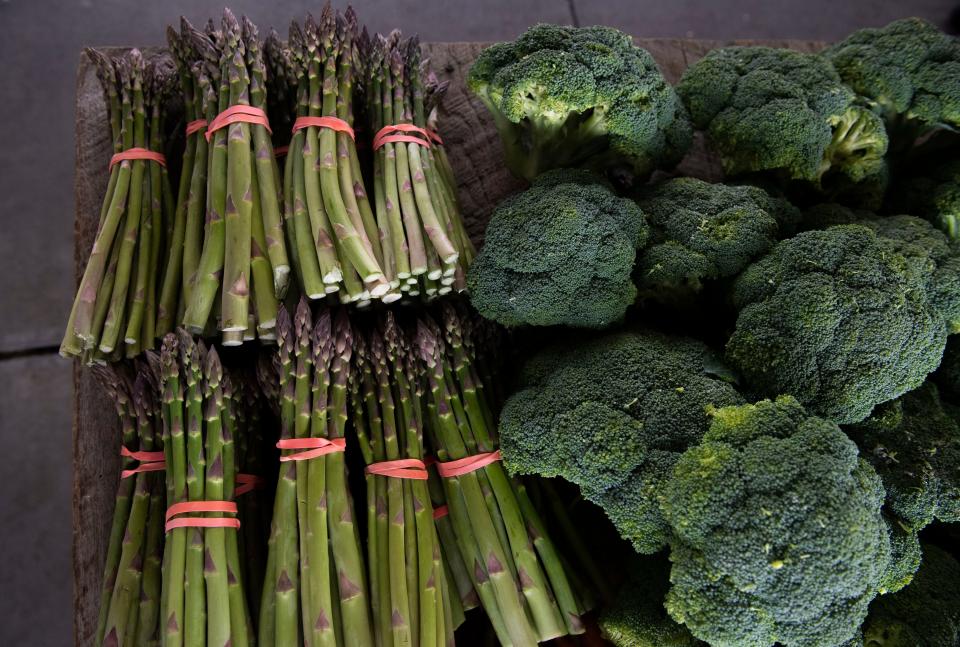Congress negotiating massive new farm bill that will affect what you eat
Every five years, Congress must pass a new farm bill. The act covers arcane and complex policies, from crop insurance to rural development. The bill has a huge impact on what everyone in America eats.
On Thursday, leaders from the U.S. House and Senate agriculture committees met with President Joe Biden to get serious about negotiating a new farm bill.
“Agriculture has been a place of commonality across the aisle,” said Pete Nelson of the Memphis-based non-profit AgLaunch. “That’s traditionally because every state has farmers, rural and urban.”
Here are three things to follow in the upcoming farm bill debate:
The farm bill is mainly a food assistance bill
Even though it is called the farm bill, the vast majority of the budget goes to food assistance. The Supplemental Nutrition Assistance Program, known as SNAP and sometimes referred to as "food stamps," will likely be 85% of the bill’s spending, according to the Congressional Budget Office.

Other food assistance programs funded by the bill include the Emergency Food Assistance Program, the Commodity Supplemental Food Program and the Nutrition Assistance Program.
Feeding America, which supports food banks across the country, wants Congress to increase food assistance to match rising prices at grocery stores. Some Republicans argue that programs enacted during the COVID-19 pandemic have already driven the cost of food assistance programs too high.
More: The Tennessean recognized for innovative storytelling about Black farmers in the South
This year, the farm bill may be entangled in the debt-ceiling fight. Some Republicans want to place new restrictions on SNAP in exchange for their votes to raise the debt ceiling.
Moves in conservation programs
“You cannot go into an ag meeting and not hear the term ‘sustainability’ five times,” said Trey Malone, an agricultural economist at the University of Arkansas.
The Biden administration has made environmental conservation a top priority at the U.S. Department of Agriculture with the Climate Smart program, which would reduce greenhouse gasses and sequester carbon. The administration also provided $19.5 billion for these programs in the Inflation Reduction Act, a measure billed as a pandemic relief measure.

Sen. John Boozman of Arkansas, the ranking Republication on the Agriculture, Nutrition and Forestry Committee, would like to move some of those conservation programs to the farm bill.
Every program in the farm bill becomes part of the law’s baseline. Although the bill must be passed every five years, its programs tend to be similar from bill to bill.
“The idea of moving those monies into the farm bill is that those dollars for conservation programs last longer,” said Patrick Creamer, a spokesman for the Republicans on the committee. “It’s a way to make more of a permanent funding mechanism.”
According to news reports, Sen. Debbie Stabenow, D-Mich., who chairs the committee, objects to moving the conservation programs to the farm bill, because Republicans would like to see more flexibility in how farmers can use those funds.
A spokesman for Stabenow did not respond to request for comment.
More support for local food?
Big farmers who grow rows of cotton, soybeans or corn get most of the aid from farm bill programs. The smaller farmers who grow fruits and vegetables, known as specialty crops, see little support.
Nelson of AgLaunch has hope that the new farm bill could be a step toward growing more local fruits and vegetables in the South and across the country.

Each section of the bill is known as a title, and Nelson sees increasing support for small farms in multiple titles: trade, nutrition, commodities and conservation.
“The seeds have been planted,” he said. “What’s yet to really happen and could happen is a coalescing from both sides, Republican and Democrat.”
More: Easy ways to make what's at farmers markets right now
Todd A. Price covers food and culture in the South. He can reached at taprice@gannett.com.
This article originally appeared on Nashville Tennessean: How Congress' new farm bill will affect the South

